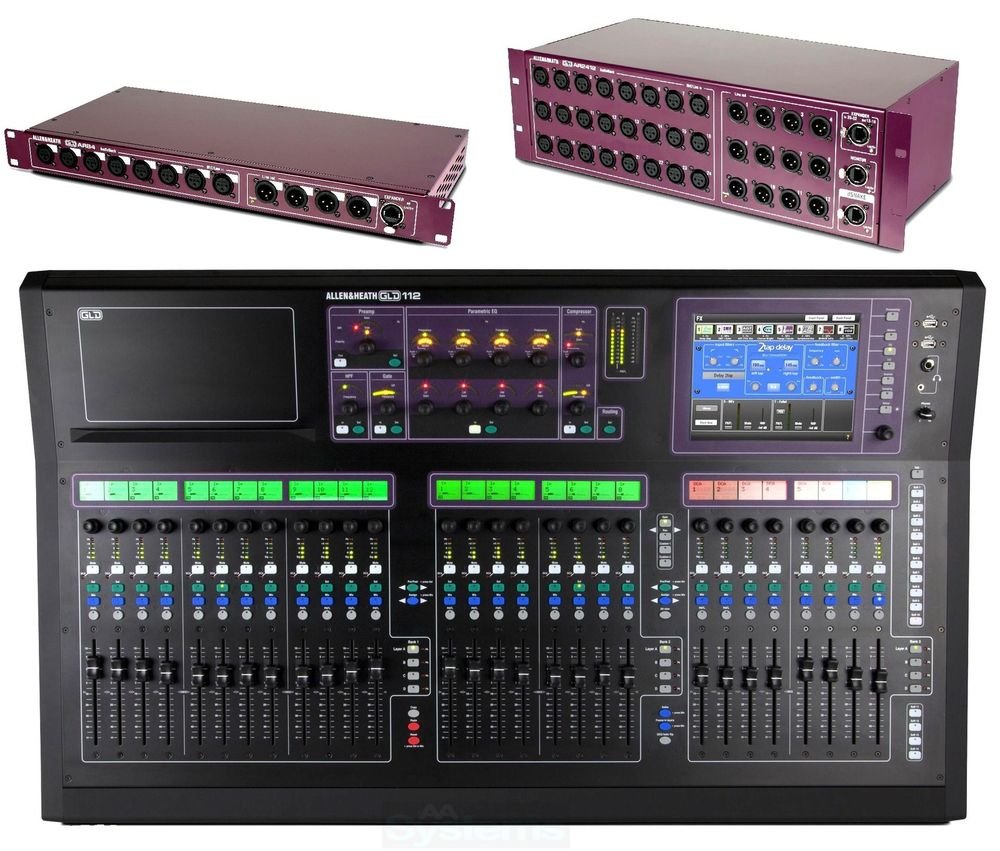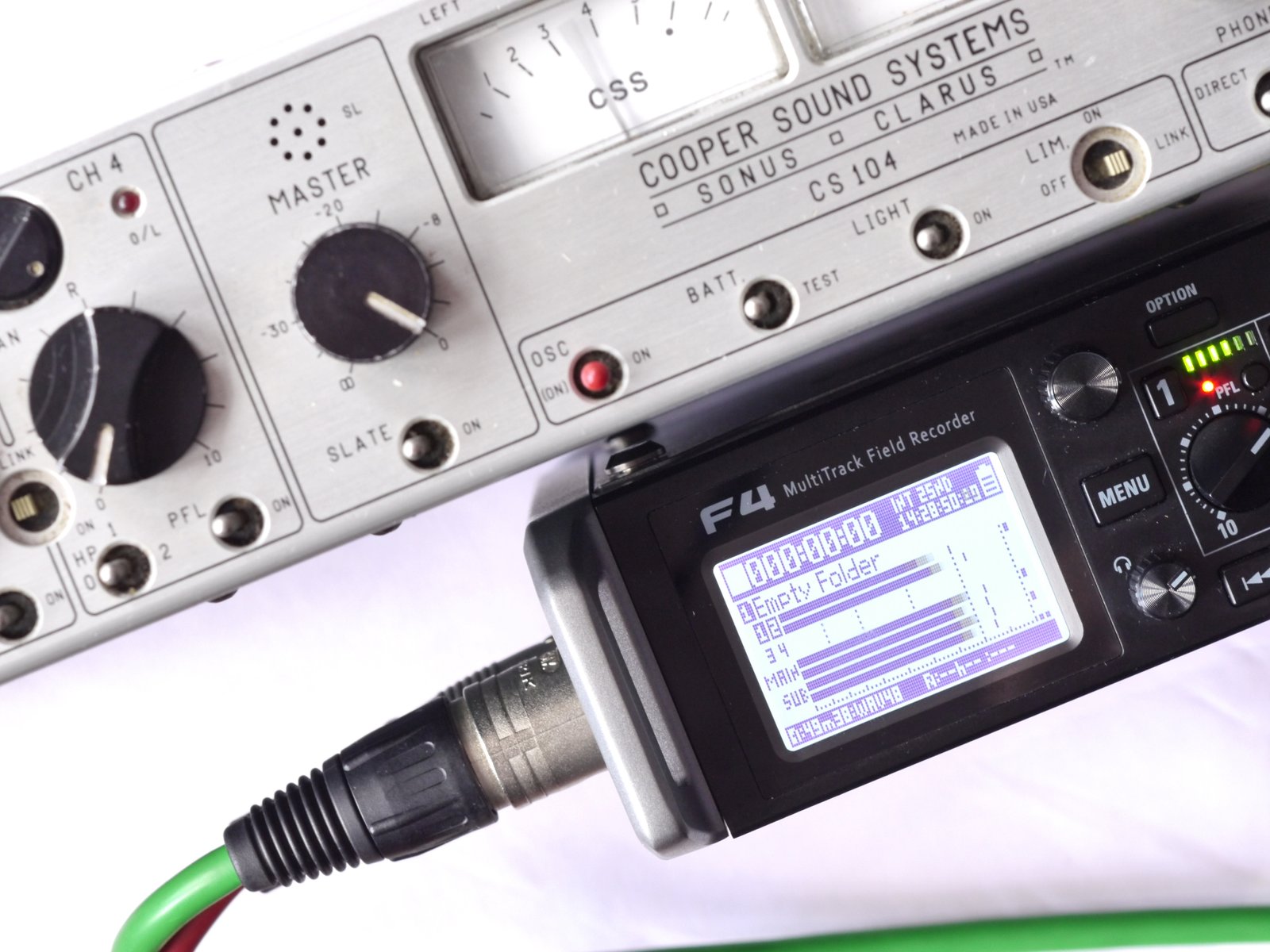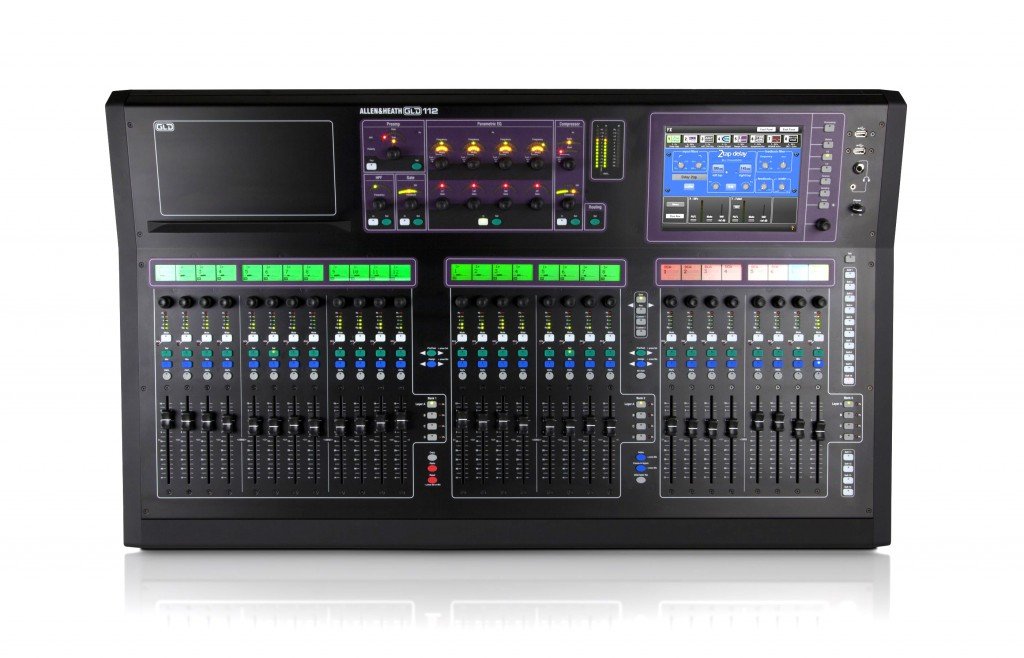Austin Allegro or Toyota Corolla, sir? Well no contest really. Japanese car manufacturers worked out early on what consumers wanted; ultra reliable machines, regularly refreshed product lines and a range of options to suit a variety of pockets. Which in a strange reversally kind of way makes me think of Allen and Heath’s digital desks. Their iLive series technology has carved a significant reputation in the live market and the technology has been cleverly packaged to suit a wide range of requirements. The new Qu-16 is making tremendous waves at a price point under two grand while the GLD series, iLive-T and of course the iLive product lines have a multitude of stage box and surface options while remaining very affordable. And the latest addition to this extensive family is the GLD 112, a twenty eight fader surface for the GLD range.
GLD launched with the GLD 80 surface and a choice of stage boxes using Allen and Heath’s dSNAKE cat 5 technology. The GLD surface offers four layers so using advanced key stage 3 maths the GLD 80 has 20 faders and by extension the new GLD 112 bumps that up to 28.
So what is it you are looking for in a live sound desk? Channel count, sound quality and work flow? Or maybe facilities and reliability are top of your list and of course cost is never far from our minds when making significant financial decisions. The GLD series is a serious attempt to tick all these boxes. First the channel count, well the GLD system maxes out at 48 inputs, this is what seperates it from its big brothers in the iLive stable. But of course in digital world channel count and fader count are both an issue. Who wants a 48 input desk with one fader and 48 layers? Yeh, I should never have launched it. The GLD 112’s main pitch is 28 faders on one surface. Why is that so imporant? Well think back to your 48 inputs. With a GLD 112 on two layers you get 56 faders, which the eagle eyed among you will notice is enough to max out your inputs and have eight mix outputs without requiring dropping down to layers three and four. And with all your effects processing available on board you might not be all the surace inputs so you have twelve or more faders for groups, auxs and other fun stuff. That just might be the workflow advantage you have been looking for.
When it comes to sound quality Allen and Heath have established themselves a serious rep for their digital desks. Their mic amps across the range are well regarded and you should have no worries about quality on that score. You get four mic inputs as part of the eight analogue inputs on the surface (plus four phono inputs) and beyond that you need to reach for the cat5. The GLDs come ready fitted with an onboard dSNAKE input. The 2412 dSNAKE stage box packages 24 mic inputs with 12 outputs and the option for one I/O expander and personal mixing using Allen and Heath’s new MEmixer series of kit or something from Aviom. You should be able to fit a rock and roll band down twenty four channels but if you insist on putting twenty three mics on the kit then you can daisy chain an AR84 to the 2412, which gives eight more mic inputs and another four outputs. If that still isn’t enough you can plug another AR84 expander direct into the GLD surface. I like the fact you can get 24 channels in one hit, others may prefer the sixteen by eight approach offered by other brands. One thing you can’t do which I would like to do is plug in two 2412s.

What about workflow? Like many digital desks you access parameters of a `selected’ channel with hardware encoders and led displays of settings. This can be used without reference to the built in screen which as well as offering a graphic display of your settings also as a touch screen functions as a control interface. It’s great to have both options and the dual capability offers a lot of flexibility. Each channel and mix output on the surface has a coloured lcd scribble strip. This simple feature is a real life saver. Yes I shouldn’t have to mix by colour but in the heat of the moment, reaching for a `red’ fader can be the difference between getting the lead vocal mic and the drummer’s vocal mic and no body wants that. Except the maybe drummer’s mother, bless her.
Each channel has a dedicated `mix’ button allowing very rapid assigments of channels to mixes and also a very quick method of checking a mix backwards. Not where is this channel going but which channels are assigned to this mix? The onboard effects deserve a special mention, they have been borrowed from the iLive series and are well tested and deliver professional sounding results across the board.
So how does the mixer feel. I think very solid — both the hardware and the software feel thorougly professional. This is not an MI product in wolf’s clothing but a pro tool designed to do a night in, night out. Like every Tom, Dick and Debbie Harri it offers an iPad app. I understand people wanting to set up the room over wireless, personally I don’t want to mix over WiFi, bad experience, don’t like to talk about it. However there’s a cut down version of the app (oneMix) which offers control of just one Aux, allowing a musician to mix their own individual monitor feed. Also shiny and new is the GLD editor software. Available for Win and OSX (I only ran the Win 7 and XP version, without any issues) it allows you to set the desk up offline and also control the desk in realtime. I think it’s a bit more literal than the iLive stuff which makes it easier for stupid people like me as for the most part the remote looks just like the surface.
The GLD accepts USB keys for audio playback and you can also record a stereo mix to the key, though only at 48Khz. I do like the fact that there is a short cut to the USB play/record screen always available in the tool bar at the bottom of the touch screen.
One of the things everyone thinks about is to what extent their spend is an open ended investment rather than a one off purchase with limited horizons. And here the GLDs have some pretty potent advantages. Although the desk ships with dSNAKE a range of other interfaces are available in addition to Allen and Heath’s basic format. You can choose between ACE, MADI, Dante, Ethersound and Waves Sound Grid formats. And if you don’t like any of them there’s a multi output card with ADAT, iDR and AVIOM on it. So if you hanker after a large networked system or already have an investment in these techonologies buying a GLD keeps you in the game with the option to add the functionality later on.
Summing up the GLD 112 is in one sense not really hard. Pretty much all of it has been road tested and road refined in other Allen and Heath products. It feels well screwed together and your unlikely to get any nasty surprises. The software is growing all the time and with the release of the editor is now very comprehensive. The workflow is flexible and has some welcome interface features for those making their living behind a digital front of house mixing desk. Undoubtedly you will have noticed that the Allen and Heath isn’t the cheapest mixer you can buy but few other products offer that magic blend of features, workflow, sound quality and expandability that makes the GLD 112 a bit of a bargain. Enjoy.


